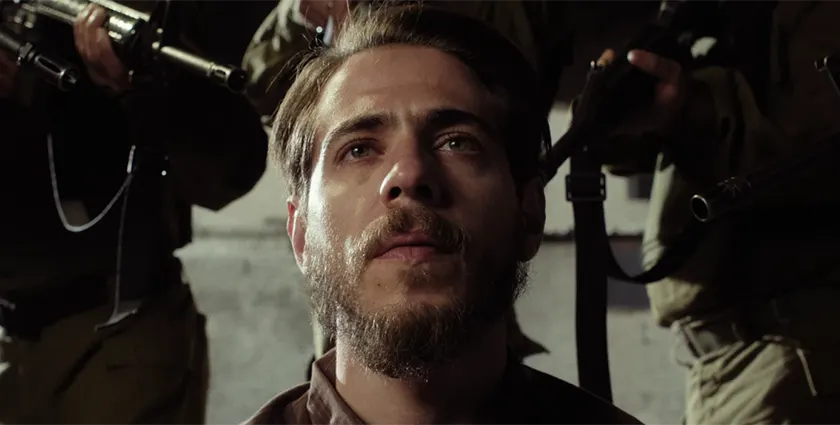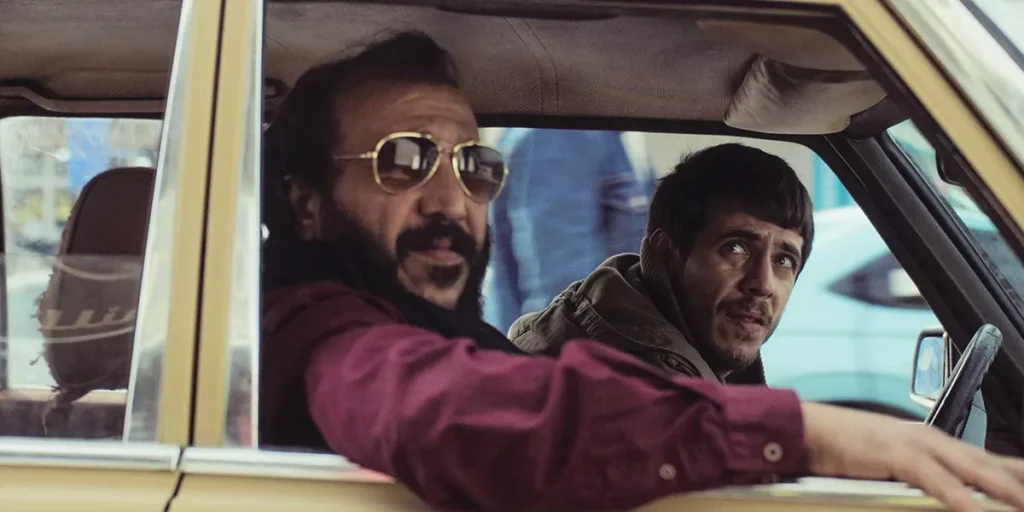Necessary and remarkable, Once Upon a Time in Gaza is a beautifully shot and politically significant film, especially relevant today.
Directors: Arab & Tarzan Nasser
Genre: Comedy, Drama
Run Time: 87′
Cannes Premiere: May 19-20, 2025
Release Date: TBA
“What you are doing is a form of resistance,” says one of the characters in Once Upon a Time in Gaza. In the context of the movie, this refers to shooting a film in Gaza, with all the difficulties that come with working in such an environment, defined by frequent airstrikes and constant political tension.
But it also feels like a statement of intentions by the filmmakers. If, in the movie’s narrative, shooting in Gaza in 2007 is an act of resistance, then the same can easily be said about making a film about Gaza in 2025, when the violence the movie shows us is not so dissimilar from what we have now become used to seeing in our everyday news.
Set in Gaza in 2007, Once Upon a Time in Gaza is a film about Yahya (Nader Abd Alhay), a young student at the local university, and Osama (Majd Eid, of Holy Spider), a charismatic restaurant owner. Their unlikely friendship forms when the two start dealing drugs together through falafel sandwiches that they make, but this will soon lead them to encounter Ramzi Maqdisi (Abou Sami), a corrupt cop with an oversized ego. Two years later, in 2009, Yahya is a changed man. After witnessing Osama’s brutal murder, he uprooted his life and was randomly cast as the lead of an action film shooting in Gaza. When Ramzi reappears in his life, Yahya must face his own feelings about Osama’s death and his desire for vengeance.
As the title suggests, Gaza is more than just a setting for this film. Once Upon A Time in Gaza goes back to 2007 to examine the painful reality of life in the Gaza Strip, with the growing control of Hamas over the territory and the constant airstrikes that the local citizens are subjected to. This is worked into the film almost seamlessly through the narrative – the television in the background constantly reminds us of the political reality in Gaza – and visuals. As the movie goes on, its narrative is often intercut with scenes of bombing and buildings exploding. While these may not advance the plot in any particular way, they are particularly powerful to witness on the screen today when we have now grown so used to seeing this type of image in our everyday news.

The film is also shot incredibly well, with many memorable sequences. With Once Upon a Time in Gaza, Tarzan and Arab Nasser prove their masterful use of the technical elements of filmmaking in an exquisite, and at times lyrical, film with their dynamic use of the camera and captivating lighting. But it is not simply art for the sake of it, thanks to the brilliant work by cinematographer Christophe Graillot. The scenes are beautiful, but the artistic elements also guide the audience to a deeper understanding of the film, with the camera panning and tilting during the most emotional and important sequences and lingering on the mirror shots that end up revealing the true nature of these characters. The ending montage mirroring the beginning, both visually and in terms of sound, is another example of this, as the film asks us to consider this series of events in a new light.
The film-within-a-film element is tricky to balance and, admittedly, Once Upon a Time in Gaza does struggle with it at times. The second half of the movie, while still brilliantly directed, is narratively its weakest and slowest section. Admittedly, the filmmaking element is necessary to deliver some key political ideas and statements that mirror the directors’ own feelings regarding the moving image as a revolutionary tool, something that seems incredibly relevant in today’s political scenario. However, it also spends a lot of time – perhaps too much time – on the filmmaking scenes and, at times, becomes too metacinematic in the way it almost overtly tells us what the message of this film is.
Ultimately, Once Upon a Time in Gaza is a beautifully shot film that is not afraid to make the audience face the harsh reality of life on the Gaza Strip for those who dare defy the current system. However, the film also leaves us with a message for the future. Not one of hope for a better and more just system, the movie makes inherent injustice incredibly apparent, but there is hope in the fact that the people can – and will – keep fighting for these injustices to be put right.
Once Upon a Time in Gaza: Movie Plot & Recap
Synopsis:
Once Upon a Time in Gaza focuses on the friendship between Yahya, a young student, and Osama, a restaurant owner. After Osama’s brutal murder, Yahya tries to move on with his life and is suddenly cast as the main character in an action film shooting in Gaza. But everything changes when he runs into his friend’s killer, who has never been prosecuted for his crime.
Pros:
- The film is shot incredibly well with dynamic camera movements and unconventional shots that heighten the more emotional moments of this story.
- The setting in the Gaza Strip is not only original but also incredibly relevant to today, with its poignant political commentary.
Cons:
- The story loses itself in the film-within-a-film plotline in the second half of the movie, which feels narratively weaker and sometimes too on the nose.
Once Upon a Time in Gaza premiered at the Cannes Film Festival on May 19, 2025, in Un Certain Regard, and will be screened again on May 20. The film will have a limited theatrical release in France on June 25, 2025.

